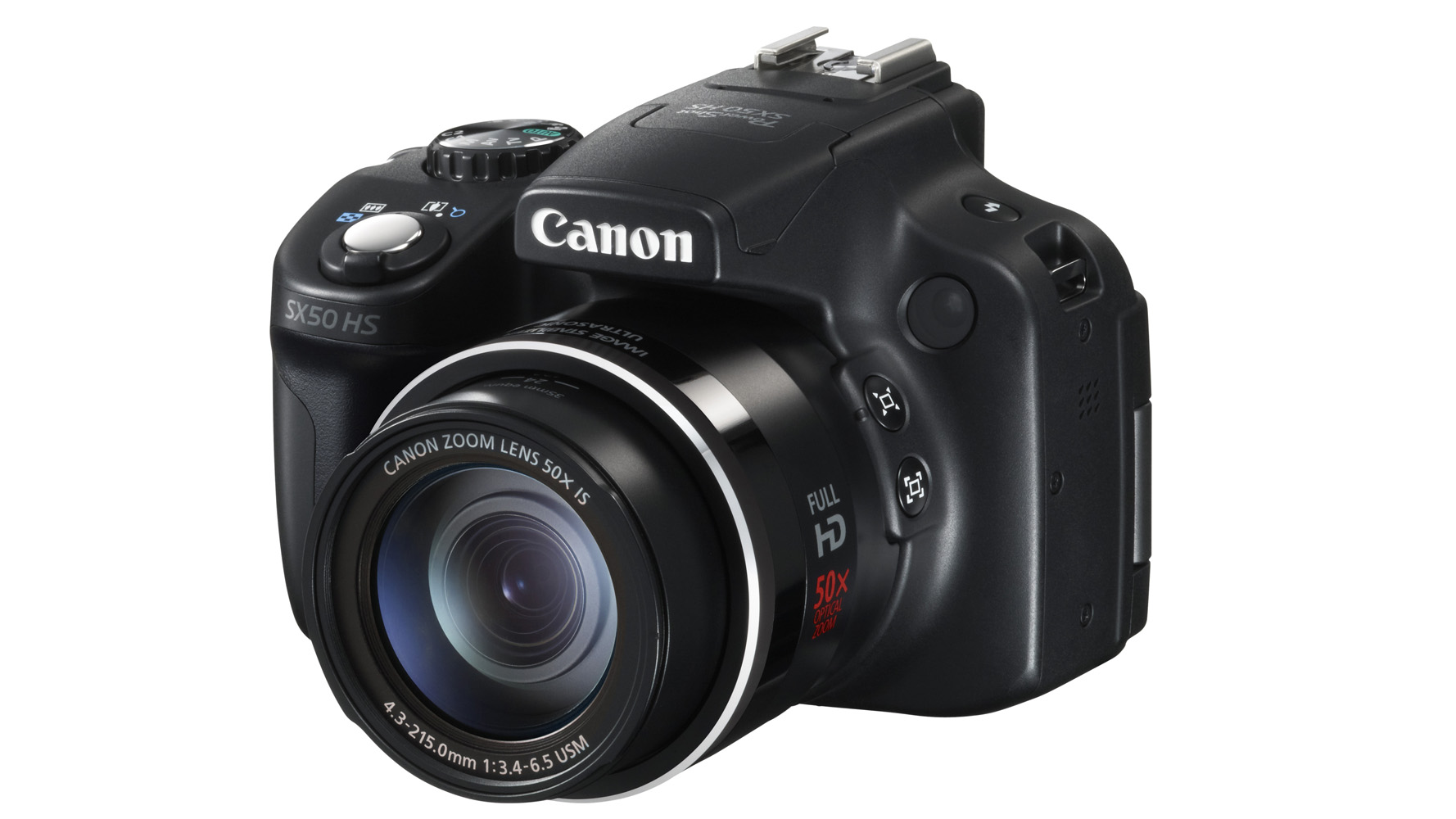Why you can trust TechRadar
We shoot a specially designed chart in carefully controlled conditions and the resulting images are analysed using DXO Analyzer software to generate the data to produce the graphs below.
A high signal to noise ratio (SNR) indicates a cleaner and better quality image.
For more more details on how to interpret our test data, check out our full explanation of our noise and dynamic range tests.
JPEG signal to noise ratio
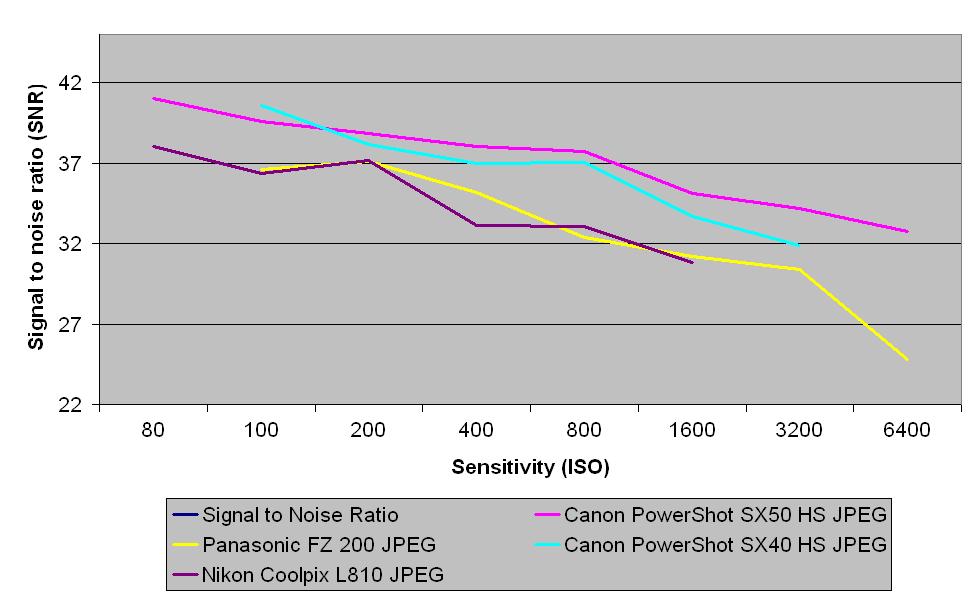
JPEG images from the Canon PowerShot SX50 HS are most similar in their signal to noise ratio scores to those from the Canon PowerShot SX40 HS, although the newer camera is slightly stronger overall. Both of these cameras produce better results than the Panasonic FZ200 and Nikon Coolpix L810, at every sensitivity setting.
Raw signal to noise ratio
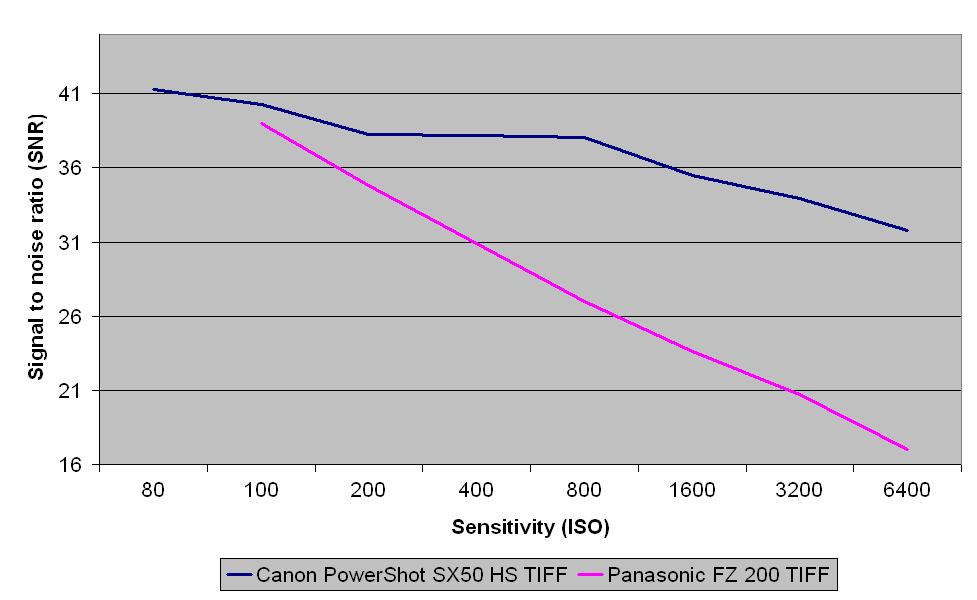
Of the cameras tested, only the Canon PowerShot SX50 HS and Panasonic FZ200 are able to shoot in raw file format. Here, the Canon beats the Panasonic again for signal to noise ratio, with the Panasonic dropping off dramatically at higher ISO settings.
JPEG dynamic range
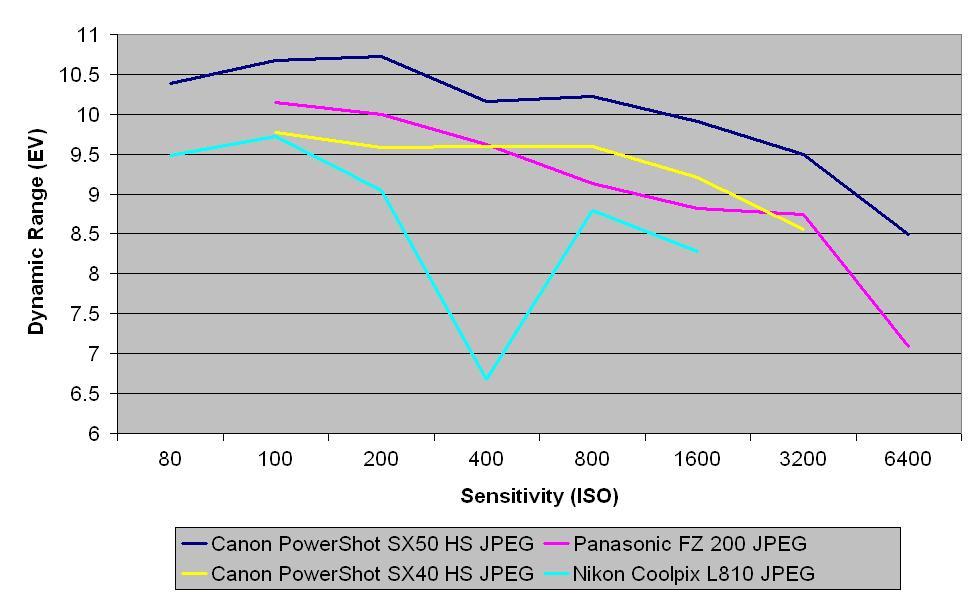
For dynamic range, JPEG images from the Canon PowerShot SX50 HS again sit at the top of the chart, beating the Canon PowerShot SX40 HS, Panasonic FZ200 and Nikon Coolpix L810 at every ISO setting, with the Nikon performing worst and the other two sitting closest together on the scale.
Raw dynamic range
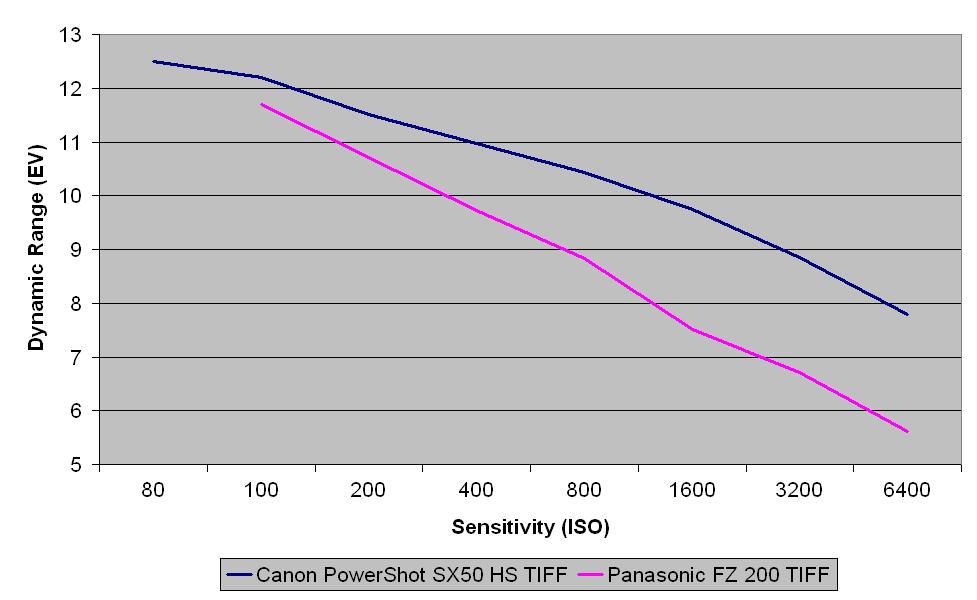
Again, in the raw image files the Canon PowerShot SX50 HS shows a greater dynamic range than the Panasonic FZ200, at all sensitivities, although this time the difference between them is slightly less pronounced.
Sign up for breaking news, reviews, opinion, top tech deals, and more.
Current page: Noise and dynamic range
Prev Page Image quality and resolution Next Page Sample images
Amy has been writing about cameras, photography and associated tech since 2009. Amy was once part of the photography testing team for Future Publishing working across TechRadar, Digital Camera, PhotoPlus, N Photo and Photography Week. For her photography, she has won awards and has been exhibited. She often partakes in unusual projects - including one intense year where she used a different camera every single day. Amy is currently the Features Editor at Amateur Photographer magazine, and in her increasingly little spare time works across a number of high-profile publications including Wired, Stuff, Digital Camera World, Expert Reviews, and just a little off-tangent, PetsRadar.
